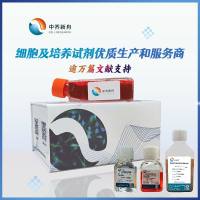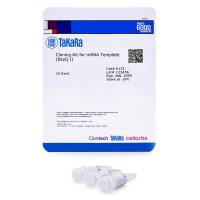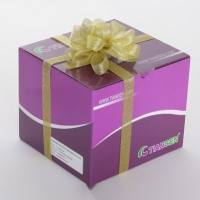SynthesisPCR模板法合成双链短RNA(PCR template method for dsRNA)
互联网
——[from Carthew/Clemens/Tuschl]
Purpose – a method for synthesis of iRNA which allows both RNA strands to be generated simultaneously from a PCR fragment which contains a T7 promoter on each end.
Background - The optimum length of a double-strand RNA (dsRNA) for maximum interference activity is unclear, but some circumstantial evidence suggests that lengths of 700 to 800 bp are most active. Carthew’s lab has found that dsRNAs as short as 200 bp and as long as 2000 bp have potent interfering activities. The dsRNA can be made from cDNA or genomic DNA templates. Data suggests that for RNAi most of the dsRNA should correspond to exon regions. dsRNAs with two or more exon regions interrupted by introns will work quite well in Drosophila. One can use dsRNAs corresponding to coding sequence and/or untranslated regions (UTRs). One approach has been to use a dsRNA corresponding to the 5" or 3" UTR (either UTR can mediate interference) since a dsRNA to one gene can cross-interfere with another gene"s activity if the dsRNA is sufficiently similar in coding sequence to the second gene.
Method
1. Choose primer sequences that will amplify the region you want to act as the dsRNA template. Consider using MIT"s Primer3 program at http://www.genome.wi.mit.edu//cgibin/ primer/primer3_www.cgi to choose optimal primer sequences for any given region. Complementary sequences should be 20 to 24 nt in length with a 22 nt optimum and 60℃ optimum Tm.
2. The 5" end of each primer can correspond to either the 27 nt “T7 promoter sequence” (TAATACGACTCACTATAGGGAGACCAC) [Carthew] or the 27 nt “T7 RNA polymerase binding site” (GAATTAATACGACTCACTATAGGGAGA) [Clemens]. Thus, each primer will be 47 to 51 nt long (27 + [20 to 24]).
3. Perform a 50μl PCR reaction with T7-linked primers and suitable template. Cloned plasmids or phage are optimal, but the method will also work on RT-PCR DNA or genomic DNA. The first 10 cycles should have a 40℃ annealing step, followed by 35 cycles with a 55℃ annealing step.
4. Phenol-chloroform extract and ethanol precipitate in NH 4 OAc. Dissolve in TE buffer and measure concentration spectrophotometrically. Clemens purified PCR products using high pure PCR purification kit [Roche Molecular Biochemicals]
5. Perform an RNA synthesis reaction in 50μl volume with 1μg of PCR DNA template using T7 RNA polymerase. Most labs use in vitro transcription kits Megascript T7 or mMessage mMachine [Ambion]
6. Remove DNA template with RNase-free DNAase [Tuschl used RQ1 Dnase – Promega]. Phenol-chloroform extract and precipitate the RNA with NH 4 OAc and Ethanol.
7. Dissolve the dsRNA in TE buffer and measure yield by spectrometer. Typical yields of RNA from 1 μg DNA template are in the 80 to 100μg range.
8. Aliquot and store dsRNA as a NaOAc/ethanol precipitate at -80℃ until immediately before use. Carthew’s lab states that the RNA becomes double-stranded during the synthesis reaction. [NOTE - Some labs perform annealing step. Clemens resuspends in H 2 O and stores at –80℃.]
9. Test the dsRNA’s condition by native agarose gel electrophoresis in TBE. Electrophorese 6-10μg of RNA and stain with ethidium bromide. Alternatively, tracelabel RNA with 32 P-ATP during synthesis, and visualize electrophoresed products by autoradiography. [NOTE - Only preparations in which the electrophoretic mobility of most of the RNA is shifted to that expected for dsRNA (very close to duplex DNA mobility) of the appropriate length should be used. Sometimes you will observe a smear of higher-order RNAs migrating slower than the dsRNA species. Although these may constitute over half of the RNA present, Carthew found that the interfering activities of these preparations are similar to more homogeneous preparations.]









